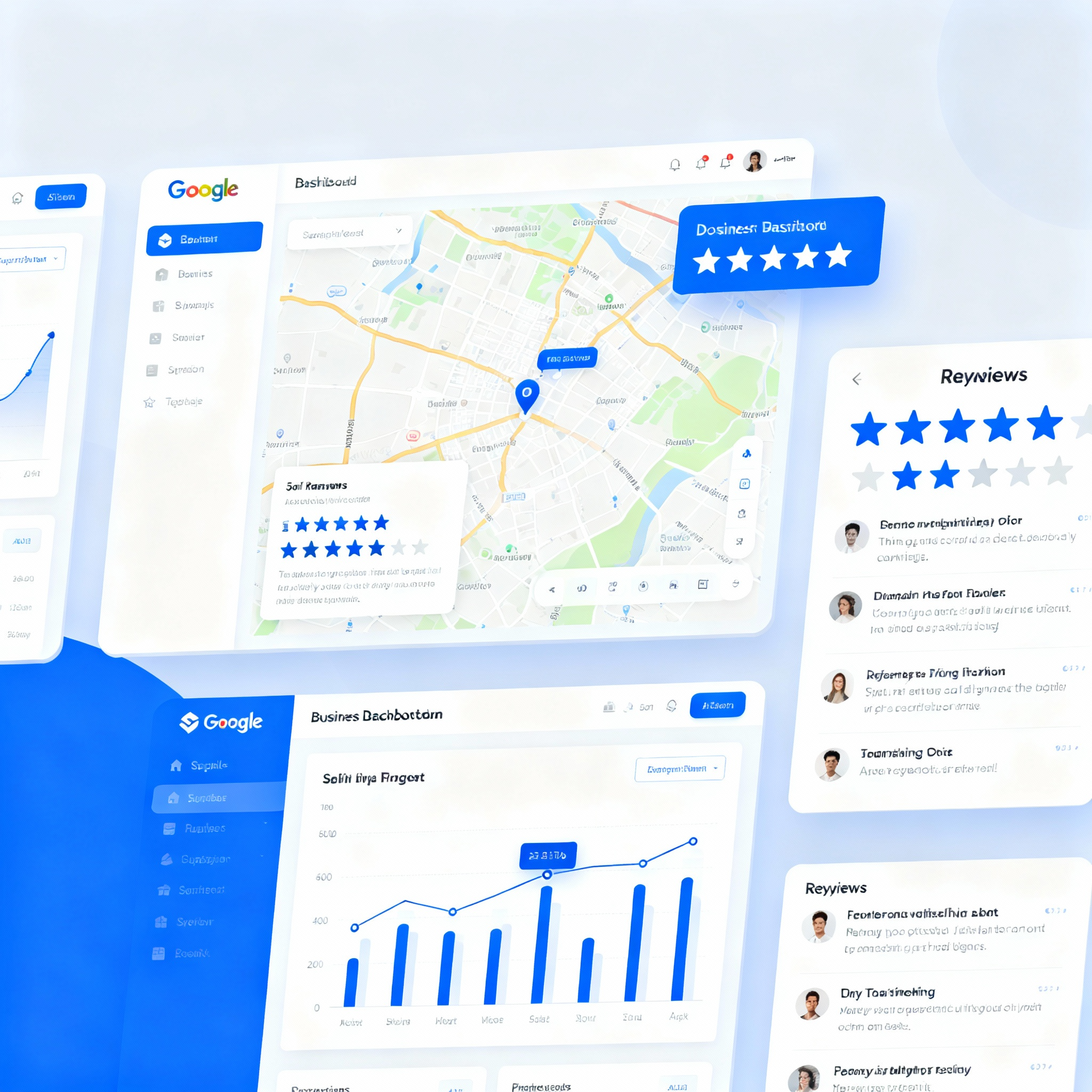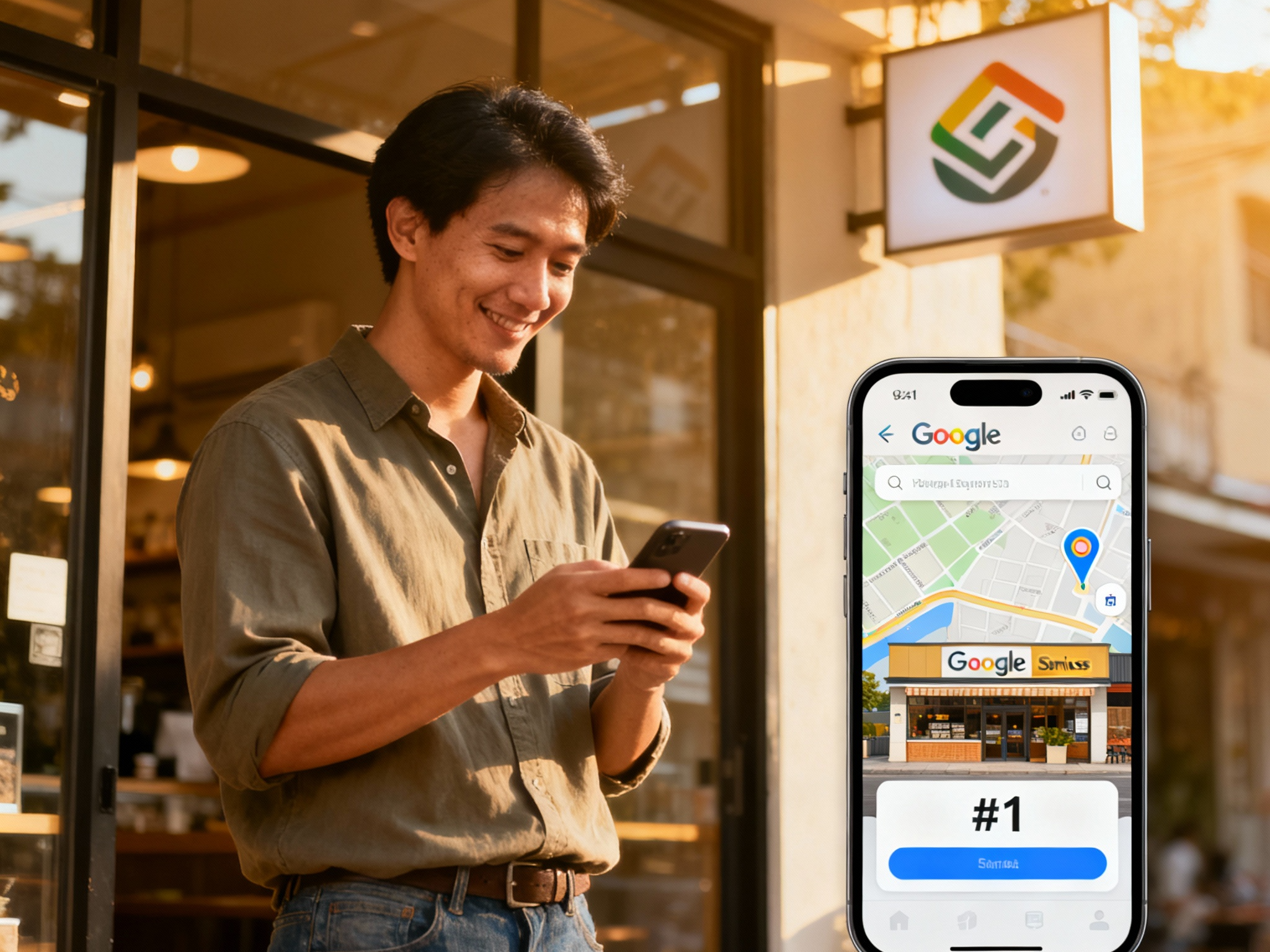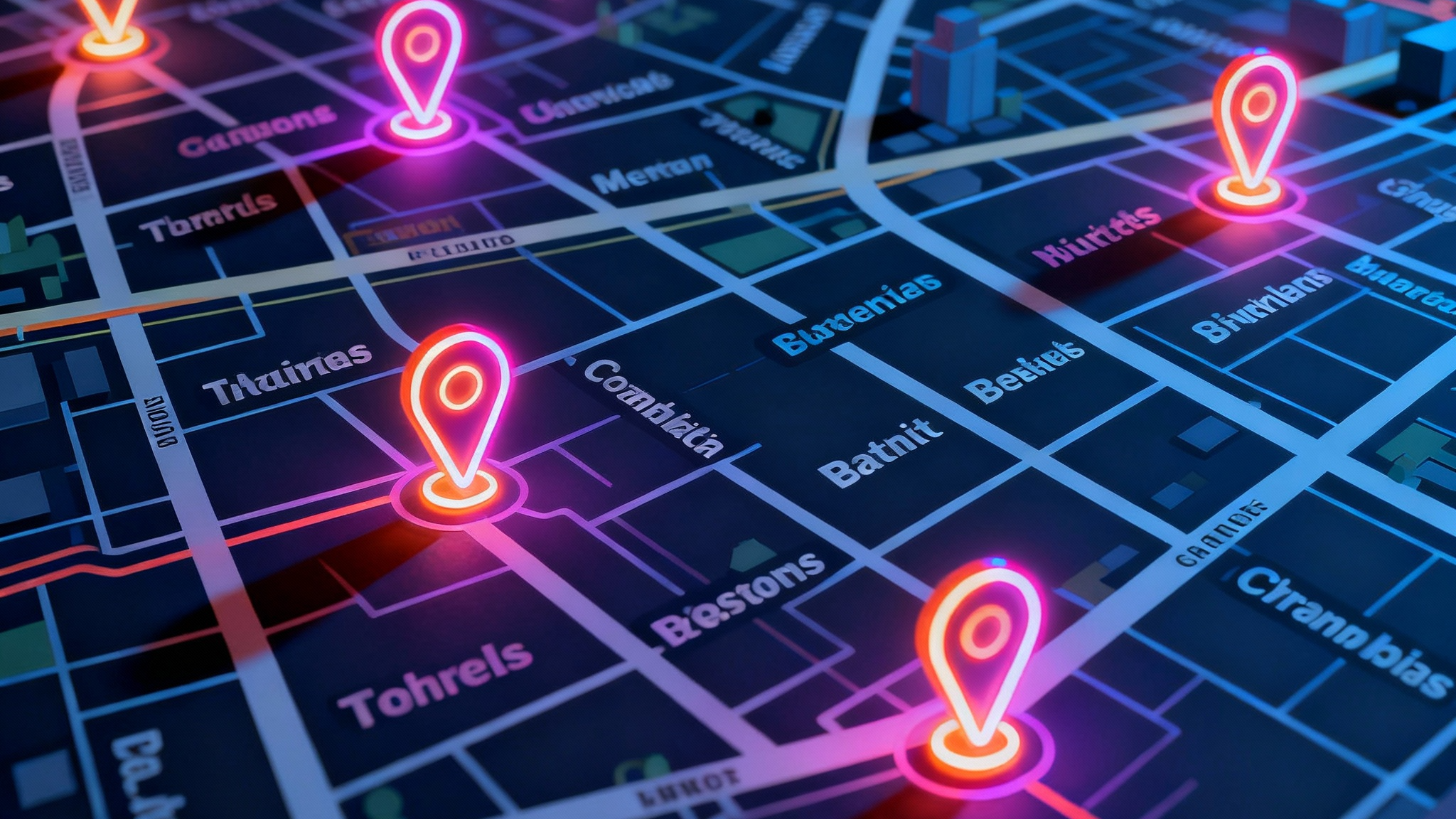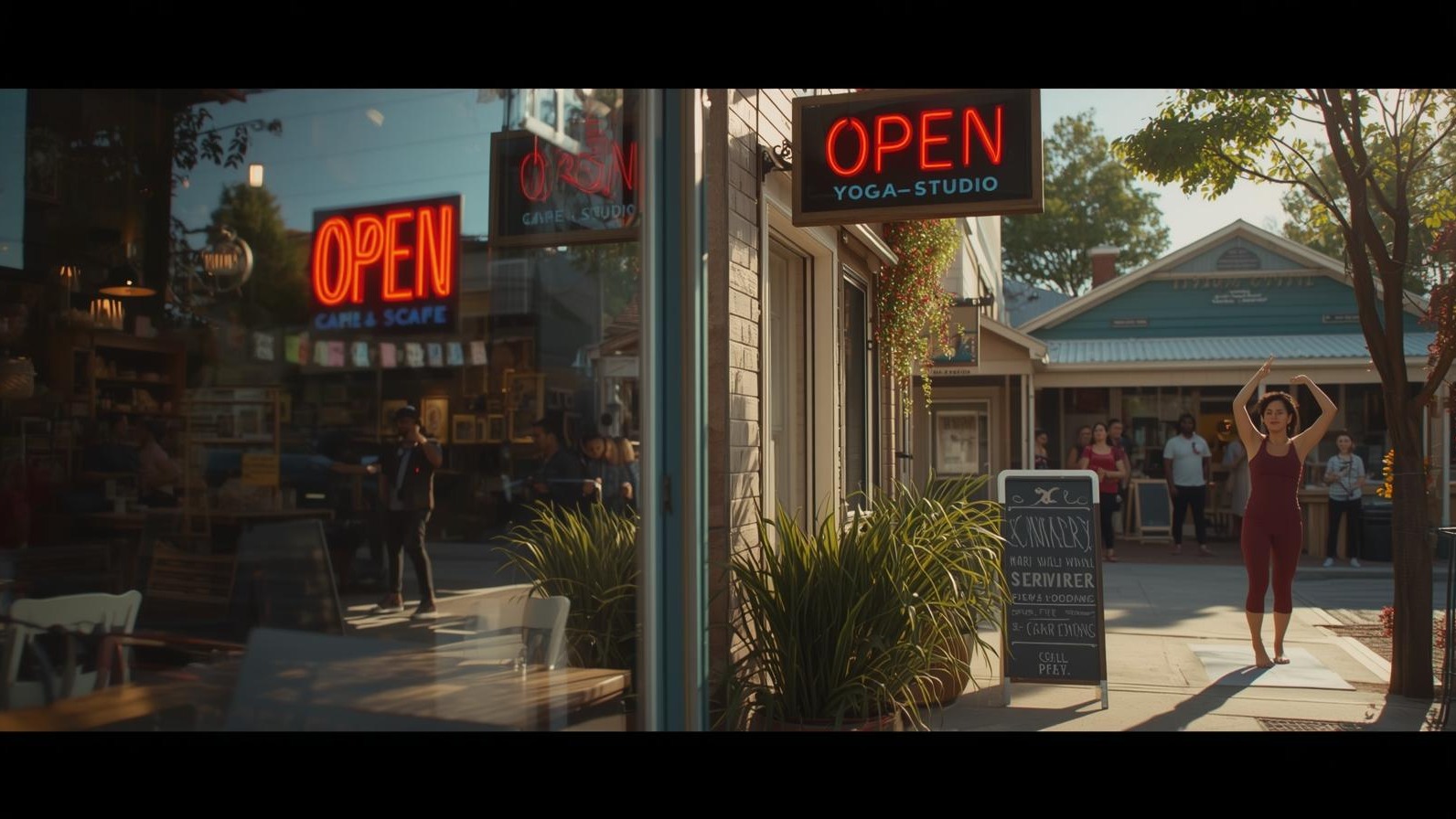Did you know that 86% of people use Google Maps to find local businesses, yet only 3 get featured in the Local Pack? Getting into that elite top 3 can change your business overnight. The good news: ranking on Google Maps isn’t luck—it’s a system. Once you understand how it works, you can climb the rankings and stay there.
Key Takeaways
Relevance, Distance, and Prominence are Google’s three core ranking factors.
Optimizing your Google Business Profile (GBP) is the single most powerful way to improve rankings.
Customer reviews, consistent listings, and fresh local content signal trust and authority.
Combining Local SEO, reputation management, and regular updates drives long-term success.

Why Google Maps Rankings Matter
When someone searches “best plumber near me” or “local coffee shop,” they’re not casually browsing—they’re ready to buy. In fact, 78% of local mobile searches lead to a purchase within 24 hours. If your business isn’t showing up in the top 3 results, you’re invisible to most searchers.
Ranking higher means more calls, more customers, and more revenue.
“The best place to hide a business is on page two of Google.” — Unknown
Step 1: Claim and Verify Your Google Business Profile
Before anything else, you need to claim your Google Business Profile (GBP). This is your online storefront—where potential customers see your reviews, business hours, photos, and location.
How to verify:
Go to Google Business Profile.
Create or claim your listing.
Verify it through mail, phone, or video.
Pro tip: Verified businesses appear more trustworthy and can rank faster.
Step 2: Complete Every Section of Your Profile
Google favors complete listings because they provide better info for users. Fill out every single section, including:
Business name, address, and phone (NAP)
Operating hours
Business category (choose the most relevant option)
Description (include local and industry keywords)
Products or services
Website and attributes (like “wheelchair accessible” or “family-friendly”)
Example: A yoga studio should pick “Yoga Studio” as its primary category and add “Fitness Center” or “Meditation Center” as secondary ones.
Businesses with complete profiles get 70% more visits and 2.7x more likely to be considered reputable by customers.
Step 3: Build Trust with Photos and Videos
Photos tell Google—and customers—that your business is active and engaging.
Add at least one new photo per week.
Show your storefront, team, products, or customers (with permission).
Use short video clips (under 30 seconds) to highlight experiences.
Listings with photos receive 42% more direction requests and 35% more website clicks.
Step 4: Collect and Respond to Reviews
Reviews matter more than you might think—they affect both your ranking and your reputation.
Tips:
Ask for reviews at peak satisfaction moments (e.g., after a positive visit or successful project).
Respond to every review with gratitude or a helpful reply.
Handle negative feedback gracefully and publicly.
Why it matters:
Google considers review quantity, quality, and frequency as ranking factors. A steady flow of genuine reviews signals credibility.
Step 5: Optimize for Keywords (Local SEO Magic)
Keywords connect your business to searchers. Focus on geo-keywords, like:
“Best plumber in Phoenix”
“Coffee shop near downtown Raleigh”
“Family dentist in Orlando”
Place those keywords naturally in your:
Google Business Profile description
Website titles
Blog posts
Image filenames and alt text
Google’s 2025 update introduced AI-powered semantic clustering, meaning your content doesn’t need to repeat exact phrases—related terms increase visibility.
Step 6: Keep Your Listings Consistent
Your Name, Address, and Phone (NAP) must match exactly across all online directories—like Yelp, Bing, and Facebook. Inconsistent information confuses Google and lowers rankings.
See How Digital Marketing All Can Drive More Traffic to Your Website
Brand Voice Strategy – Let our team help you create your brand voice to attract your ideal customer.
Local SEO - unlock more SEO traffic. See real results. Dominate your local market.
Dominate Google – Let us get your company to the top of Google.
Competitive Link Analysis – Know what your competitors are doing.
Geo-Targeting – Let us find your customers in your desired location.
Content Marketing - Our team creates epic content to be shared, generate links, and attract traffic. We know the secret recipe for success.
Paid Media Advertising- effective paid strategies with clear ROI. You pay per result with us.
Blogging Services – Let us create a blog that will help you rank.
Search Price Optimization – Wouldn’t it be great if Google and Bing recommended your business? It is possible. Not only can you own the keyword in your local area and nationally exclusively, but you can control your advertising cost by getting out of the price war that exists in pay-per-click advertising and achieve a higher ROI.
Growth Blast - Receive 2 video ad posts daily, posted on 3 social platforms to grow your business visibility.
Marketing Consulting - Develop tailored strategies to grow your brand and maximize impact.
AI Agent - Get a customized AI Agent that will become your 24/7 Sales Agent.
Business Coaching - One on One coaching to help you through anything that is hindering your business.
Book a Strategy Call

Step 7: Post Weekly Updates
Consistent posting shows Google your business is alive and thriving.
Ideas:
Announce promotions, new products, or events.
Share happy customer stories.
Highlight community involvement.
Pro Tip: Use short text and include a call-to-action like “Call now,” “Learn more,” or “Book today.”
Step 8: Earn Local Backlinks
Backlinks from reputable local sites boost your prominence.
Where to get them:
Partner with nearby businesses.
Sponsor local events.
Get listed in your city’s Chamber of Commerce.
Write guest posts on community blogs.
Each local link is a vote of trust telling Google you’re a credible local brand.
Step 9: Monitor and Improve Performance
Use tools like:
Google Maps Insights: See where customers find you.
Local Dominator or Local Falcon: Track rankings across city grids.
Review monthly performance and adjust.

FAQs
1. How long does it take to rank on Google Maps?
Typically 30–90 days with consistent optimization.
2. Can I rank for multiple cities?
Yes, but each location needs its own optimized GBP and local content.
3. Do paid ads affect Google Maps ranking?
Not directly. However, running Google Local Ads can boost visibility while your organic ranking grows.
4. Why did my ranking drop suddenly?
Google updates its algorithm often. Double-check that your profile info, categories, and listings are still up to date.
Building your presence on Google Maps is about consistency, credibility, and connection. Each update you make signals to both Google and customers that you’re active, trustworthy, and ready to serve.
If you take one thing away from this: ranking on Google Maps isn’t a one-time project—it’s an ongoing habit.
I hope you enjoyed reading this blog post. If you want to be our next success story, have my team do your marketing. Click here to book a call!
 Add Row
Add Row  Add
Add 








Write A Comment